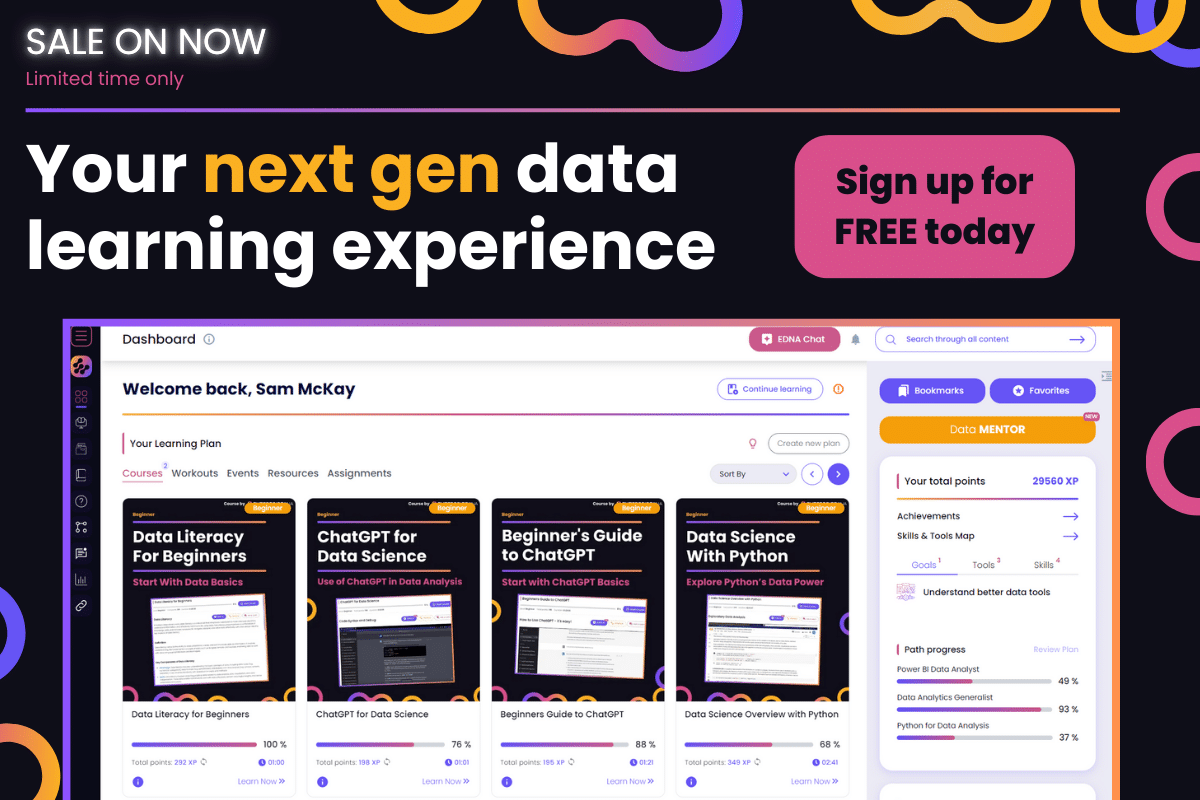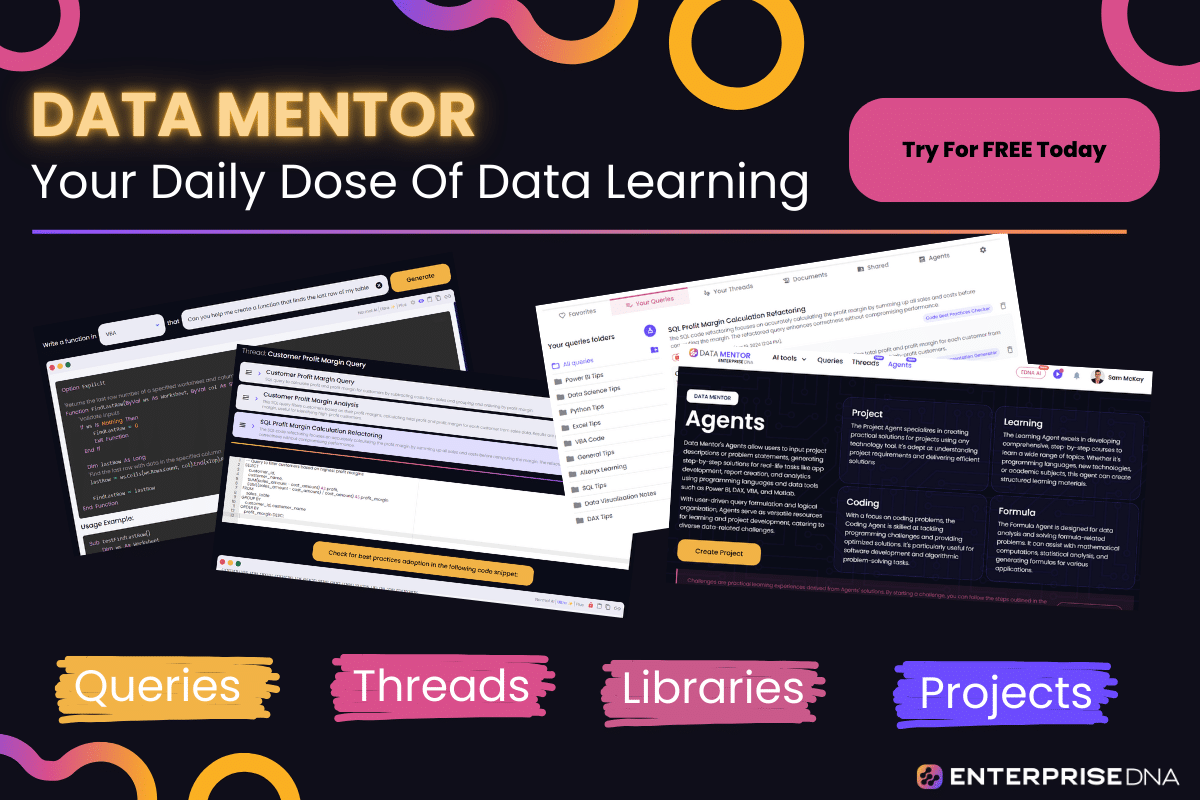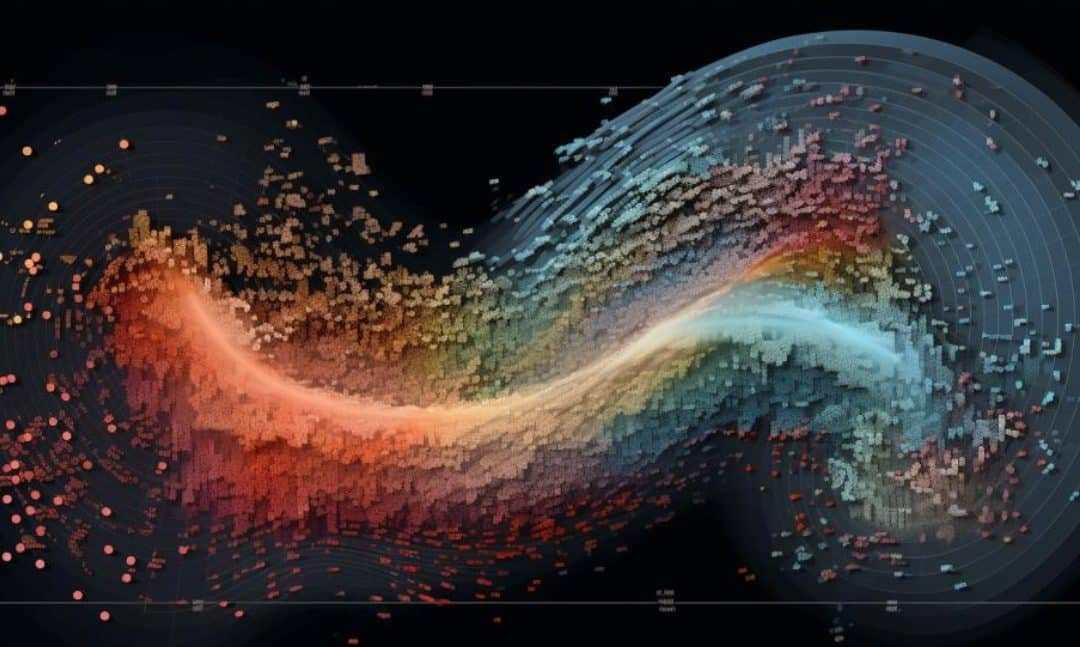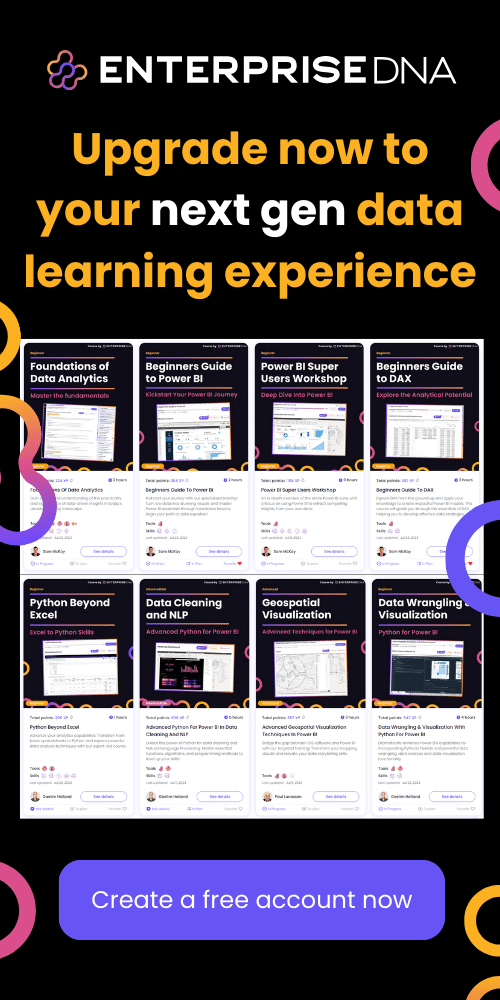Are you looking for a way to explore and analyze real-world data to enhance your understanding of statistics?
Well, you’re in luck!
Datasets can be invaluable, leading you through the intriguing realm of statistics. But the question remains: where do you find these treasure troves of data?
Datasets for statistics projects are data collections that can be analyzed to draw insights, make predictions, or understand relationships between different variables. These datasets can vary widely in size, complexity, and subject matter and are often used in various fields, including health, social impact, climate analysis, business, and science.
In this article, we’ll take you through 10 of the best datasets we could dig up that will give you a solid foundation to work on your statistics projects.
We’ve scoured the internet for you and categorized these datasets based on various themes, such as economic indicators, healthcare, and sports.
You can also find some datasets that cater to specific statistical methodologies, such as regression and clustering.
So, if you’re ready to embark on an adventure in statistical exploration, let’s dive into these stimulating datasets!
1. Economic Indicators
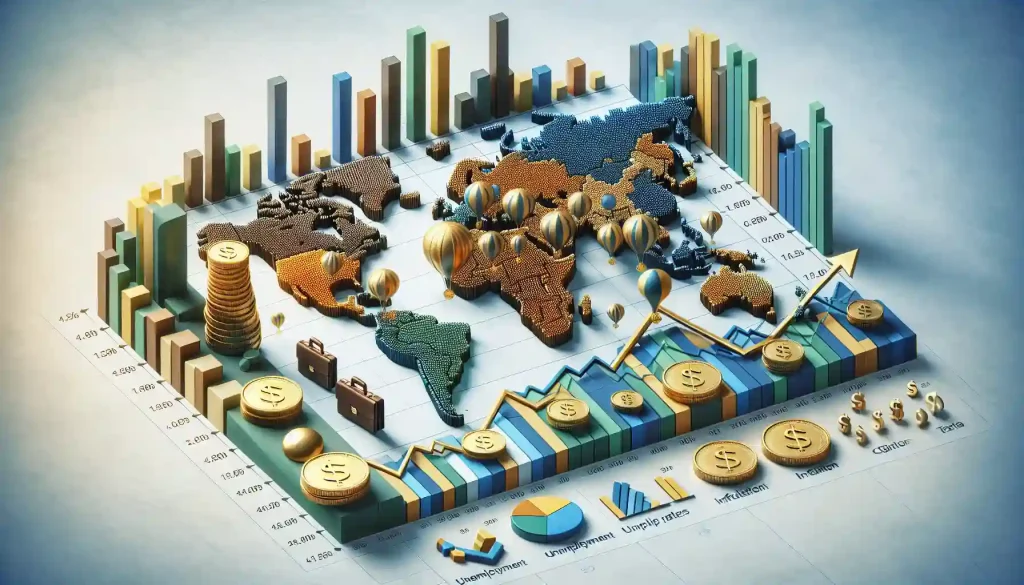
Economic indicators offer a wealth of statistics that can be used to explore the financial health of countries, regions, and industries.
These measures provide a snapshot of various economic aspects, such as money supply, inflation rates, and employment levels.
You can explore a wide range of economics datasets, totaling 281 in number, at Data World’s Economics Datasets.
Here are some popular economic indicators you can use for your project:
- GDP growth: The World Bank’s database offers real-time indicators of global economic activity, such as GDP growth, monetary policy uncertainty, and trade.
- Consumer prices: The Consumer Price Index (CPI) is a commonly used measure for inflation, and it’s widely available through various sources, such as the US Bureau of Labor Statistics or the Federal Reserve Economic Data (FRED).
- Unemployment rate: The International Labour Organization provides an extensive database of labor market statistics, including unemployment rates by age, gender, and education.
- Exchange rates: The International Monetary Fund offers a comprehensive database of exchange rates for currencies worldwide.
Now, let’s shift our focus to healthcare datasets, offering a glimpse into medical and health-related trends.
2. Healthcare

Healthcare statistics enable researchers to examine and interpret various medical and health-related trends.
Explore HealthData.gov, a website offering high-value health data for entrepreneurs, researchers, and policymakers to improve health outcomes.
Databases in this category often include data on disease prevalence, healthcare costs, and access to healthcare services.
The datasets in healthcare you might utilize include:
- Cancer statistics: The Surveillance, Epidemiology, and End Results (SEER) database provides information on cancer incidence and survival in the United States.
- Hospital visits: The Healthcare Cost and Utilization Project (HCUP) includes data on inpatient hospital stays, emergency department visits, and ambulatory surgery procedures.
- Healthcare costs: The Medical Expenditure Panel Survey (MEPS) is a valuable resource for understanding healthcare costs in the United States, including expenses related to insurance, prescription drugs, and medical care.
- Disease trends: The Centers for Disease Control and Prevention (CDC) offers data on various health-related topics, including chronic diseases, infectious diseases, and public health emergencies.
Moving on to the realm of sports statistics datasets, where we’ll dive into the world of athleticism and competition.
3. Sports
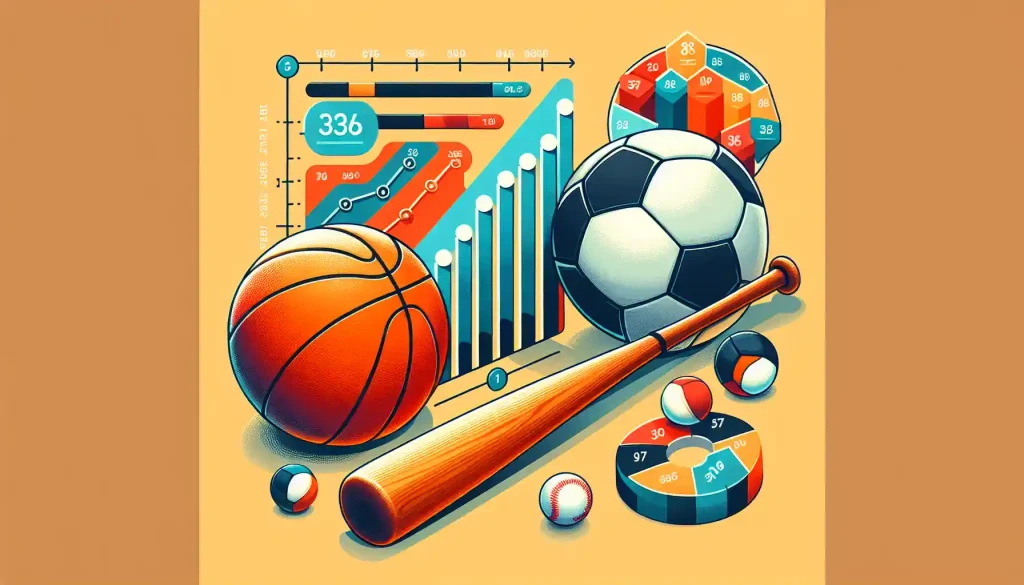
Sports statistics provide a fascinating glimpse into the world of athleticism and competition.
The datasets in this category typically include data on team and player performance across various sports and information on sporting events and tournaments.
If you’re seeking information about sports data, check out this website: OSU Sports and Society Initiative.
Some other high-quality sports datasets for your statistics project are:
- Basketball statistics: The NBA provides a wealth of data on player and team performance, including scoring, shooting percentages, and defensive metrics.
- Soccer statistics: The European football database (Kaggle) offers data on player performance, team rankings, and match outcomes from major European leagues, such as the English Premier League and the German Bundesliga.
- Baseball statistics: The Lahman Baseball Database includes a comprehensive collection of data on Major League Baseball players, teams, and seasons, dating back to the 19th century.
- International sports events: The Olympic Games database (Kaggle) contains data on all Olympic Games from 1896 to 2016, including information on athletes, medal winners, and event outcomes.
Transitioning to the intriguing world of time series datasets, valuable for understanding trends over time.
4. Time Series
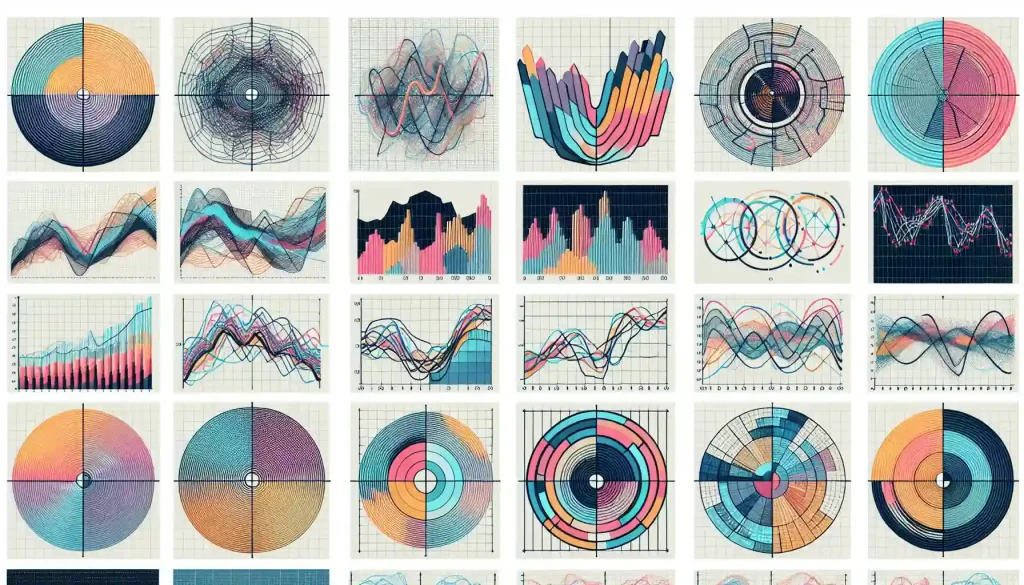
Time series datasets are incredibly valuable for understanding and analyzing trends over time.
These data sets often include observations at regular intervals, such as daily, weekly, or monthly, capturing patterns and dynamics of various phenomena.
Explore 60 time series datasets available at Data World Time Series Datasets.
Some other fantastic time series datasets you might consider are:
- Financial markets: The Yahoo Finance API allows you to access publicly traded companies’ historical stock prices, trading volumes, and other key financial metrics.
- Energy consumption: The National Renewable Energy Laboratory (NREL) provides data on electricity consumption, renewable energy production, and energy prices at the regional and national levels.
- Climate and weather: The National Centers for Environmental Information (NCEI) offers a variety of datasets on temperature, precipitation, and other meteorological variables, which are crucial for understanding climate change and its impact.
- Economic trends: The Federal Reserve Economic Data (FRED) is an extensive source of time series data on various economic indicators, such as gross domestic product (GDP), unemployment rates, and consumer prices.
Now, let’s explore text-based datasets, a rich source for natural language processing and sentiment analysis.
5. Text-Based Datasets
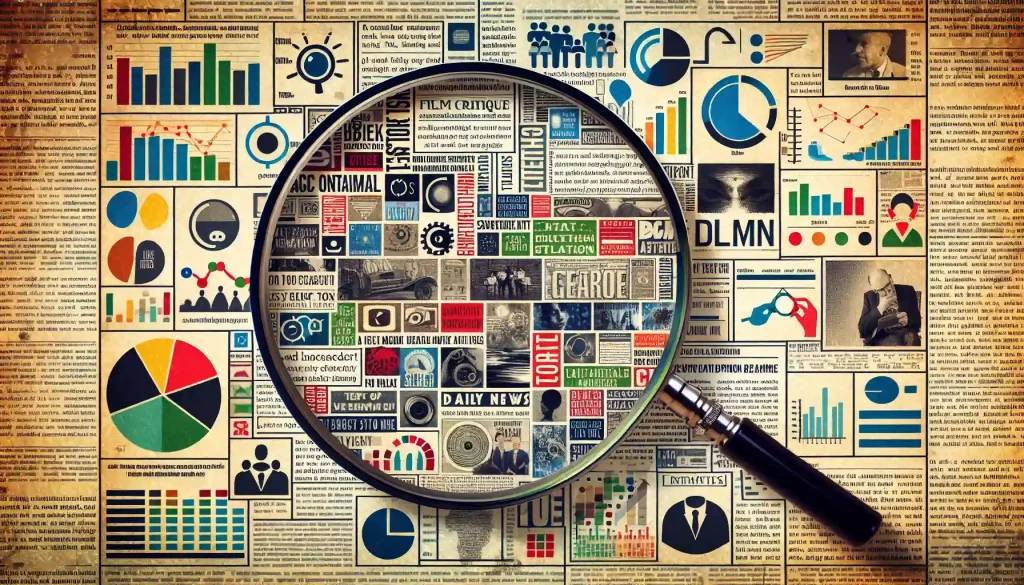
Text-based datasets are a rich source of information and insights, particularly in natural language processing (NLP) and sentiment analysis.
For datasets suitable for text analysis and NLP projects, visit UCI Text Analysis and NLP Datasets.
If you’re interested in working with this type of data, you could consider these text-based datasets:
- Movie reviews: The Internet Movie Database (IMDb) and Rotten Tomatoes offer user reviews and rating datasets for thousands of movies, which can be used for sentiment analysis and opinion mining.
- News articles: The New York Times API provides access to articles, blog posts, and other content published by the newspaper, making it a valuable resource for text analysis and information extraction tasks.
- Product reviews: Online retail platforms like Amazon and eBay offer datasets of customer reviews for a wide range of products, which can be used to analyze consumer sentiment and preferences.
- Social media posts: Popular social media platforms like Twitter and Facebook provide APIs that allow you to access and analyze text-based data, such as tweets, status updates, and comments.
Let’s now transition to geospatial datasets, where we’ll work with location-based data to analyze patterns and trends.
6. Geospatial Datasets

Geospatial datasets are a fascinating field in data science, offering the opportunity to work with location-based data and analyze patterns and trends in a geographic context.
To delve into an extensive range of GIS data, you can explore the collection here: Free GIS Data by R. T. Wilson.
Some exciting geospatial datasets to consider include:
- OpenStreetMap (OSM): OSM is a collaborative project to create a free and editable world map, offering a vast amount of geospatial data on roads, buildings, and points of interest.
- Earth observation data: NASA and the European Space Agency (ESA) provide a wealth of geospatial data, including satellite imagery and environmental data, which can be used for many Earth observation tasks.
- Real-time location data: Services like Foursquare and Google Places APIs offer real-time location-based data, allowing you to analyze check-ins, user ratings, and other location-based information.
- Census data: Many countries provide geospatial datasets of population distribution, demographic statistics, and other relevant information collected during censuses.
Moving on to image datasets, enabling us to leverage the latest image recognition and computer vision techniques.
7. Image Datasets
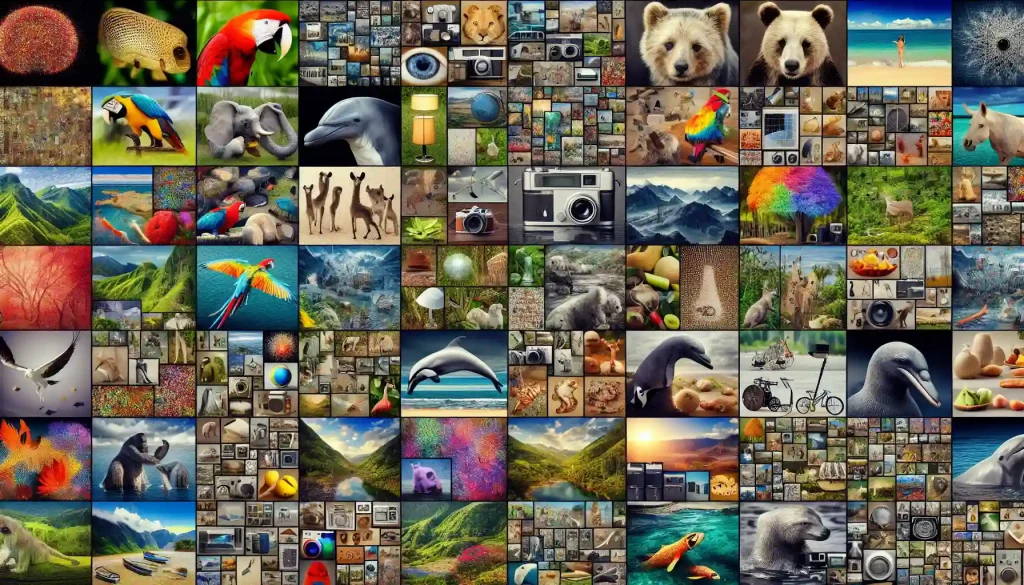
Image datasets are compelling, allowing you to work with visual data and leverage the latest image recognition and computer vision techniques.
Explore 22 free image datasets tailored for computer vision applications, available atiMerit Free Image Datasets for Computer Vision.
Some of the most popular image datasets for your statistics project are:
Some of the most popular image datasets for your statistics project are:
- MNIST: The MNIST dataset is a classic benchmark for image classification tasks, consisting of 28×28 pixel images of handwritten digits (0-9).
- CIFAR-10 and CIFAR-100: These datasets contain small, low-resolution images (32×32 pixels) of 10 or 100 classes of objects (e.g., airplanes, cars, birds, cats, and more). They are widely used for benchmarking image recognition algorithms.
- ImageNet: ImageNet is one of the largest image databases, with millions of labeled images covering thousands of object categories. It’s commonly used in the training and evaluation of deep learning models.
- Open Images Dataset: This is another large, diverse image dataset containing millions of images annotated with bounding boxes, object segmentations, and labels.
Shifting our focus to government datasets, a valuable resource for various data science projects.
8. Government Datasets
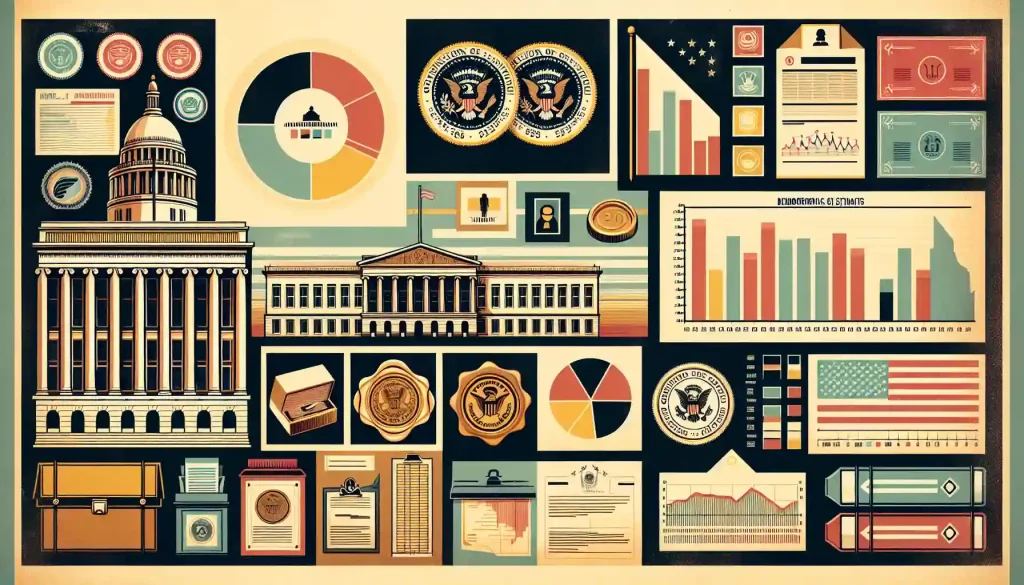
Government datasets are an excellent resource for various data science projects, including data analysis, machine learning, and visualization.
Take a look at the website that provides access to the U.S. Government’s Open Data.
Some high-quality government datasets you might consider using for your statistics project include:
- Census Data: The United States Census Bureau provides many datasets covering population, demographics, and various social and economic indicators, including the American Community Survey and the Economic Census.
- CDC Data: The Centers for Disease Control and Prevention offer a wealth of public health datasets, including vital statistics, chronic disease data, and infectious disease surveillance.
- Socrata Open Data: Socrata is a platform that hosts various datasets from various government agencies, covering public safety, transportation, and environmental health.
- National Centers for Environmental Information (NCEI): The NCEI provides access to a vast collection of environmental and climate data, including weather observations, climate indicators, and historic weather and climate data.
Now, let’s delve into R datasets, a treasure trove of data for statistical analysis and visualization.
Now, let’s delve into R datasets, a treasure trove of data for statistical analysis and visualization.
9. R Datasets
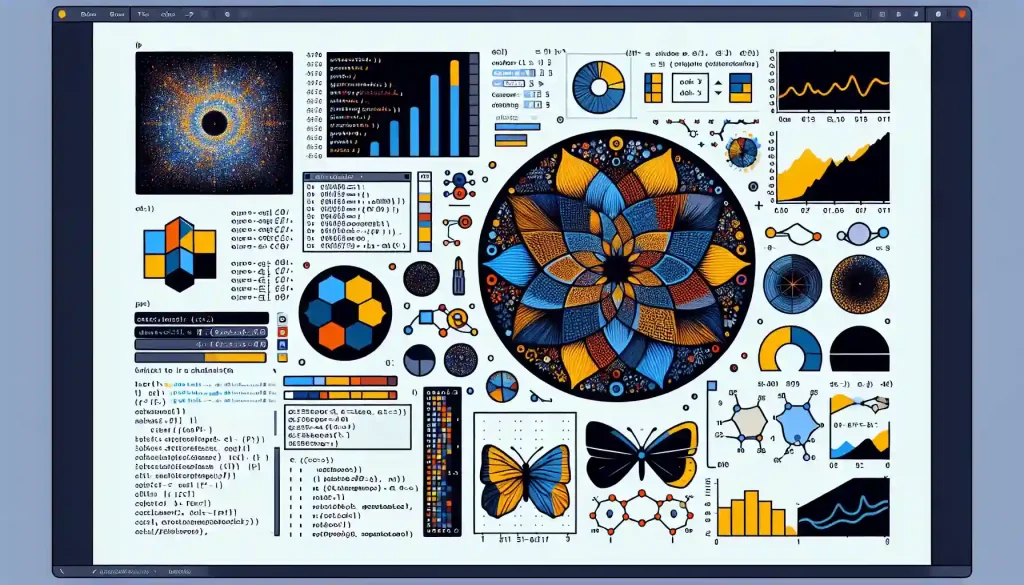
R is a popular programming language for statistical analysis and data visualization, with many datasets readily available.
Here are some R datasets available compiled on Reddit.
Some standard R datasets you might encounter in your statistics projects are:
- Iris dataset: A classic dataset in statistics, the iris dataset contains measurements of sepals and petals of three different species of iris flowers. It’s commonly used for machine learning and data visualization tutorials.
- mtcars dataset: This dataset includes various attributes of 32 cars, such as miles per gallon (mpg), number of cylinders, and horsepower. It’s often used for regression analysis and other statistical modeling tasks.
- ChickWeight dataset: This dataset contains weight measurements of chickens from an experiment testing the effectiveness of different feeds on chicken growth. It’s commonly used for analyzing longitudinal data and repeated measures.
- Pew Research Center Religion Dataset: This dataset from the Pew Research Center contains demographic information and religious affiliations of US adults.
For our final example, let’s explore statistical methodology-specific datasets tailored to specific statistical techniques.
10. Statistical Methodology-Specific Datasets
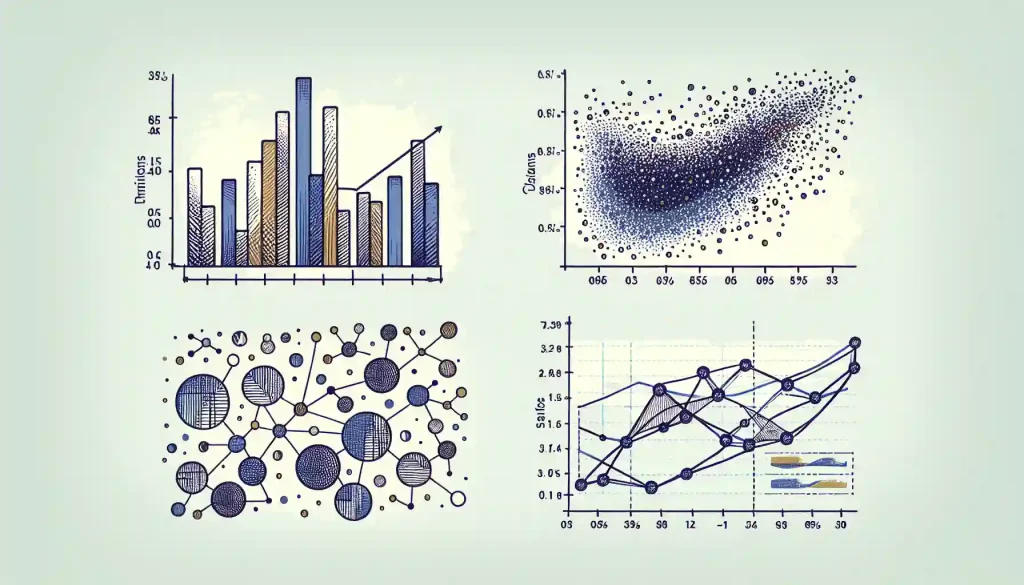
Particular statistical methods or techniques may require specific types of data to be practical.
Check out this collection of thematically related datasets suitable for different regression analysis types.
Here are some prominent examples of datasets tailored to specific statistical methodologies.
- Regression analysis and linear models: The advertising dataset from the ISLR package in R contains information on sales, TV, radio, and newspaper advertising budgets, often used to demonstrate simple and multiple regression.
- Clustering and unsupervised learning: The famous Iris and Old Faithful Geyser datasets can be used to explore clustering methods, such as the k-means algorithm.
- Classification and prediction: The Titanic dataset, available on Kaggle, is widely used for practicing classification and logistic regression, assessing factors influencing survival on the Titanic.
- Time series analysis: The AirPassengers dataset, also available as part of the R datasets package, contains monthly totals of international airline passengers from 1949 to 1960, making it a perfect example for time series analysis and forecasting.
Let’s take a look at some resources for creating your datasets, empowering you to gather your own data for analysis.
Resources for Creating Your Datasets

The best resources for creating your datasets are:
Web scraping tools: Tools like Beautiful Soup (Python) and Rvest (R) are perfect for extracting information from websites. This can be useful for creating datasets on news articles, product reviews, or any other online text-based data.
APIs: Many websites and online platforms provide APIs for accessing their data. For example, Twitter offers the Twitter API, which allows you to collect tweets and user information. Examples include the OpenStreetMap API for geospatial data and the New York Times API for news articles.
Surveys and questionnaires: Create surveys and collect data from friends, family, or online communities. Services like Google Forms make creating and distributing surveys easy, and you can download the results as a dataset.
Camera and sensor data: If you can access a camera or sensors, you can collect your data for image recognition, object detection, or other applications. For example, you could take pictures of different objects to create your image dataset.
Consider data collection’s ethical and legal implications, especially when dealing with personal or sensitive information. It’s essential to obtain consent from participants and comply with data protection regulations.
Now, let’s discuss tips for choosing the right dataset, a crucial step in any data analysis project.
Tips for Choosing the Right Dataset

5 tips for choosing the Right Dataset:
- Define your research question: Clearly define the research question or hypothesis you want to investigate. This will help you identify the key variables and characteristics you need in the dataset.
- Understand the data requirements: Consider the data type you need for your analysis. Do you need numerical, categorical, time-series, or textual data? Understanding the data requirements will help you narrow down your options.
- Check the dataset’s quality: A high-quality dataset is essential for meaningful analysis. Check for missing values, outliers, and errors in the dataset. Make sure the dataset is well-documented and comes with a clear description of the variables and their meanings.
- Consider the dataset’s size: The dataset’s size is essential. A small dataset may not provide enough information for robust analysis, while a large dataset may be challenging and require more computational resources.
- Explore multiple sources: Don’t limit yourself to one source. Explore various data sources, such as government databases, academic research, industry reports, and open data repositories.
Once you have chosen a dataset, it’s time to explore and analyze it. This step is as important as selecting the suitable dataset, as it will guide you in drawing meaningful conclusions from the data.
Finally, finding the right dataset is the compass that guides your statistical journey.
Final Thoughts
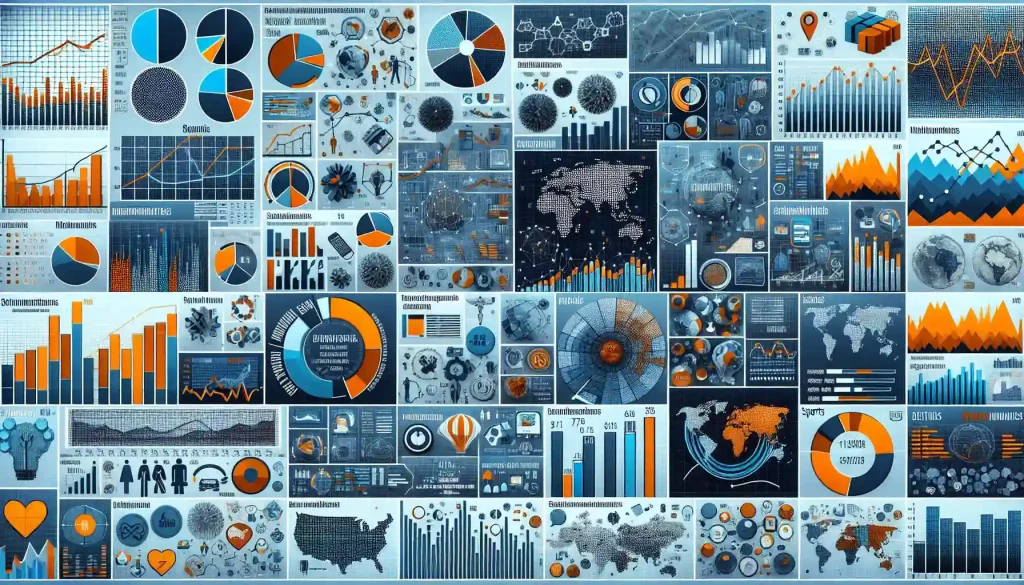
In the fascinating world of statistics, a well-chosen dataset is critical. Whether you are a student eager to deepen your knowledge or a professional honing your skills, finding a suitable dataset is crucial to success.
We’ve explored various enriching datasets, from economic indicators to time series, text-based, sports datasets, and more. By investigating these inspiring resources, you can significantly enhance your statistical prowess.
Don’t forget, when deciding on a dataset, you must carefully consider its relevance to your research question, its richness of attributes, and its overall quality. Moreover, always ensure that your dataset is used ethically and responsibly.
So, buckle up and embark on your statistical journey with an invaluable dataset as your compass. Happy exploring!
Do you want to learn more about AI in the modern workflow? Check out this great video on the EnterpriseDNA YouTube channel.
Frequently Asked Questions
Where can I find free datasets for statistics projects?
There are several online resources where you can find free datasets for statistics projects. Websites like Kaggle, Data.gov, UCI Machine Learning Repository, and GitHub are popular repositories for many datasets.
Many academic institutions and research organizations also make datasets available to the public.
What are some examples of datasets for practice in R or Python?
A diversity of datasets can be used for practice in R or Python. Some standard options include the Iris Flower, Pima Indians Diabetes, Boston House Prices, and Wine Quality datasets.
You may also find the Marketing Data, Berkeley Earth Surface Temperature, or Seattle Bicycle Counts datasets useful.
How can I find a dataset to practice a statistical test like ANOVA?
If you want a dataset to practice ANOVA, you might consider exploring online resources tailored to statistical learning and data analysis.
For example, you might search for the “PlantGrowth” dataset found in the datasets package in R. This dataset is often utilized to illustrate the concepts of ANOVA.
Where can I find comma-separated value (CSV) datasets for practice?
To locate CSV datasets for practice, you can visit data-sharing websites such as Kaggle and UCI Machine Learning Repository and browse their vast repositories of open datasets.
Often, these websites offer the option to download datasets in CSV format, compatible with a wide range of data analysis tools and programming languages.
Are there any popular medical datasets for practice understanding statistics?
Several popular medical datasets are frequently used for practicing statistical analyses. Datasets like the Pima Indians Diabetes dataset, the Breast Cancer Wisconsin (Diagnostic) dataset, and the Heart Disease dataset are commonly employed.
These datasets contain a range of attributes related to various medical conditions, making them useful for data analysis and statistical learning.


